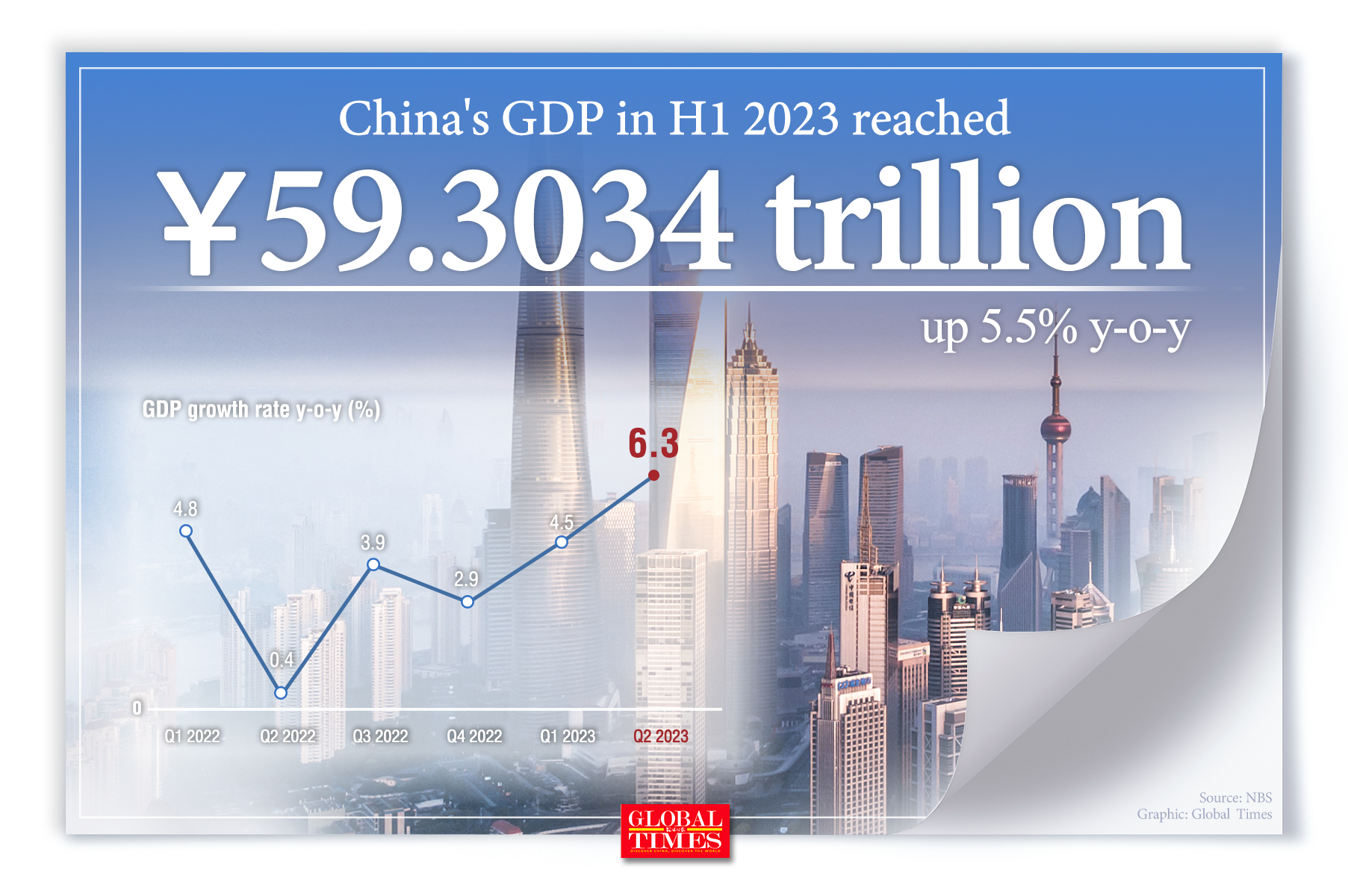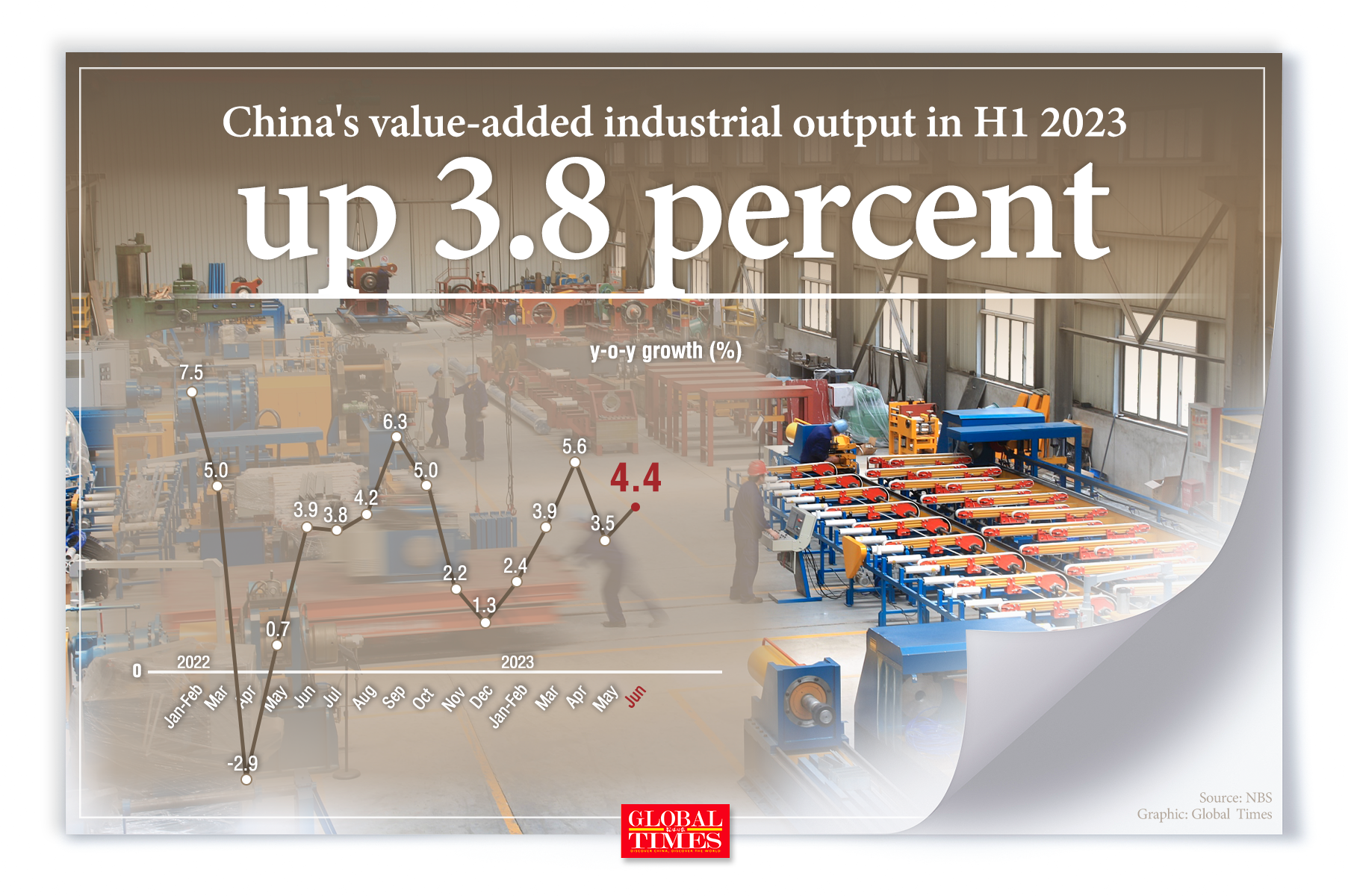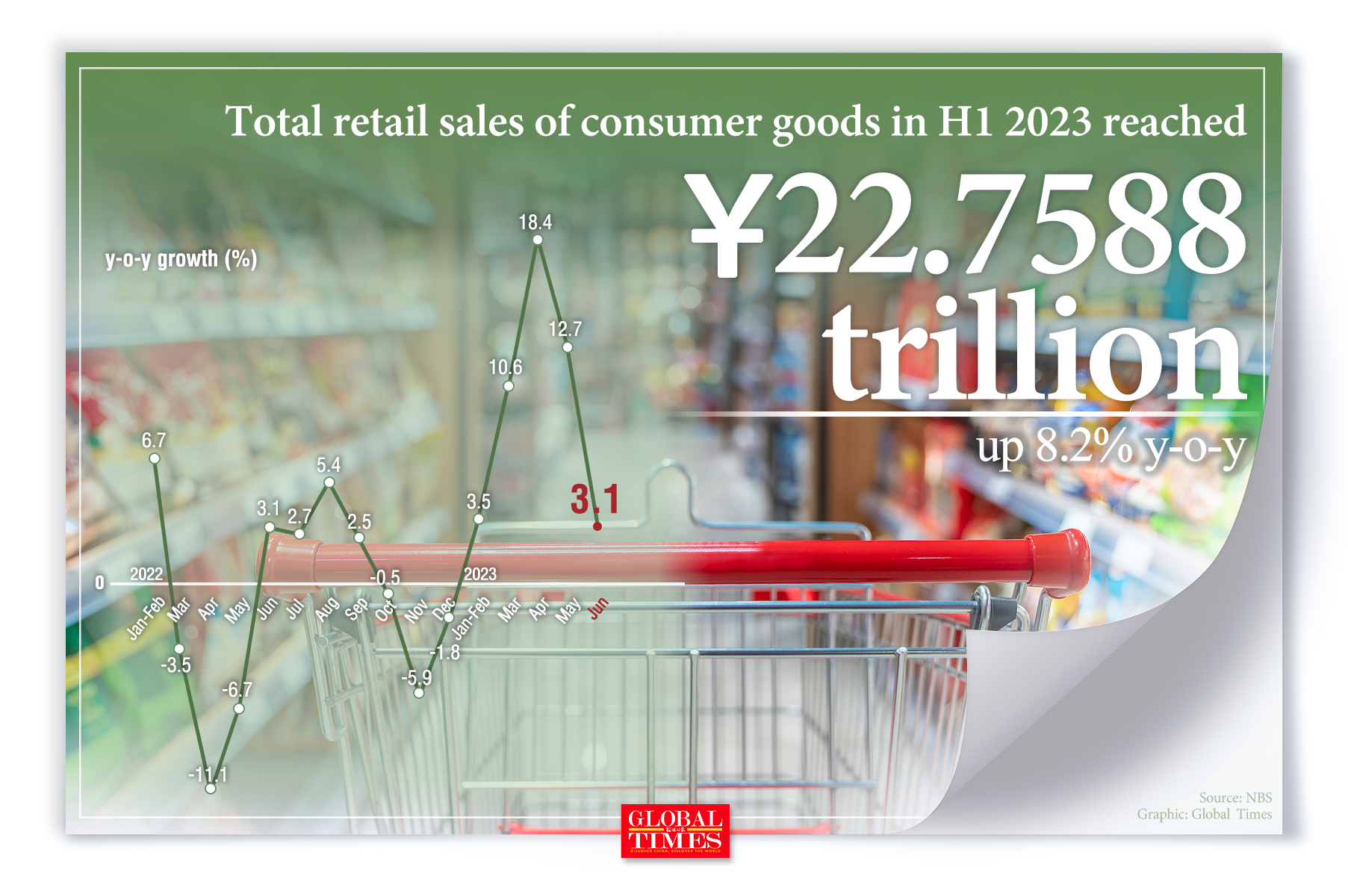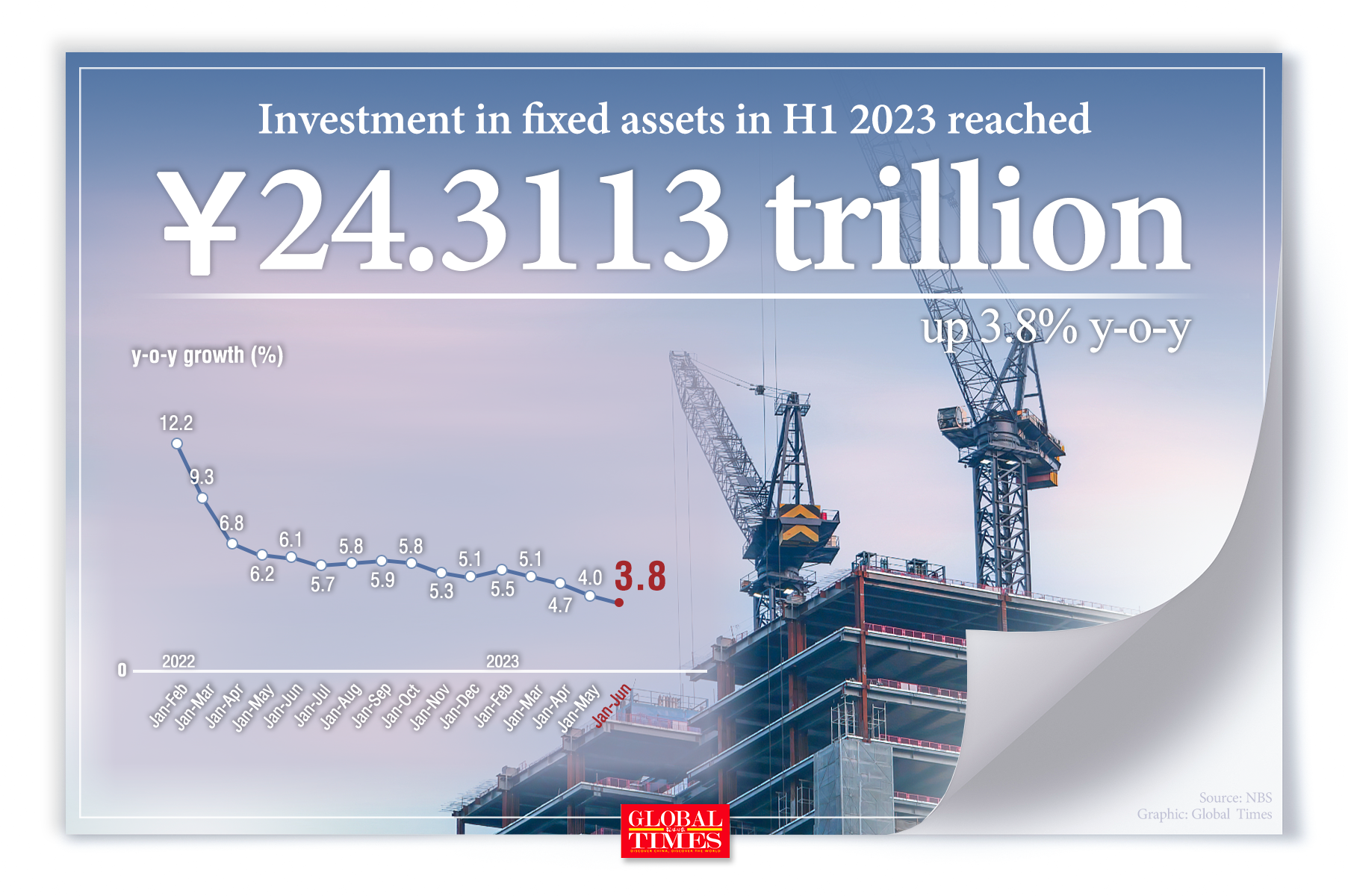
Graphic: GT
China's GDP expanded 5.5 percent to reach 59.3 trillion yuan ($8.3 trillion) in the first half of the year, as the country's economic recovery continues steadily amid headwinds including a volatile international environment, a slowdown in global trade and investment as well as financial turbulence.
With more support policies being rolled out, China is capable of achieving its annual growth target of around 5 percent this year as well as steady and sustained high-quality development for a long time to come, and the Chinese economy will continue to be a key driver for the world economy, analysts said on Monday.
The economy grew by 6.3 percent year-on-year in the second quarter, the fastest pace since the second quarter of 2021, when growth hit 8.3 percent. In the first quarter of 2023, China's GDP grew by 4.5 percent.
"The achievement is hard-won amid multiple domestic and external challenges. It reflects that Chinese consumers' confidence wasn't seriously damaged and that the country's dual circulation development paradigm driven by high-tech sector offsets slowdown in external demand," Cao Heping, an economist at Peking University, told the Global Times.
He said there were multiple highlights contributing to China's economic recovery in the second quarter, including rapid recovery of the services sector, improvement in foreign trade structure and stable growth of infrastructure investment.

Graphic: GT
According to the data released by the National Bureau of Statistics (NBS) on Monday, the total value added of the industrial enterprises above the designated size grew by 3.8 percent year-on-year in the first six months, an increase of 0.8 percentage points compared with the first quarter, reflecting accelerated recovery of industrial production and improved business expectations.

Graphic: GT
Retail sale of consumer goods jumped by 8.2 percent year-on-year to hit 22.76 trillion yuan over the reporting period, an increase of 2.4 percentage points compared with the first quarter. In addition, the country's fixed-asset investment grew steadily by 3.8 percent year-on-year to reach 24.3 trillion.
The normal operation of the world's second largest economy is a slap in the face for
Western media hyping up a theory that China's economic recovery is losing steam, Cao said, noting that the economy is still a locomotive for the world economy.
Liu Guoqiang, deputy governor of the People's Bank of China, said on Friday that some of the challenges currently facing the Chinese economy are normal in a post-pandemic economic recovery, noting that internationally, it is believed that consumption and economic recovery takes about one year, and
it has only been half a year since China started to recover from the pandemic.Looking ahead, the Chinese economy is expected to recover steadily in the second half of the year, contributing to the achievement of its annual growth target of around 5 percent this year, said Lian Ping, chief economist and head of the Zhixin Investment Research Institute.
In order to ensure the realization of the goal, the central government may step up counter-cyclical macroeconomic policy measures for the rest of the year, Lian said, noting that he forecast full-year GDP to grow up to 5.6 percent year-on-year with powerful policy support.
Still, many also raised concerns about the overall recovery weakness facing the world's second-largest economy. The IMF, for example, said on Thursday that China's economy is slowing due to weaker private investment, slowing exports and reduced domestic demand after a strong performance in the first quarter.
While the economic growth is rebounding, we should be aware that the current upturn in China's economy is mainly in the process of recovering, with endogenous driving force still weak and demand insufficient, Zhang Yansheng, chief researcher of the China Center for International Economic Exchanges, told the Global Times.
"The most difficult moment is an opportunity for economic transformation and upgrade. The country's economic recovery in the second half of the year will undoubtedly outperform that seen in the first half," Zhang said. He said the Chinese economy still has many highlights and advantages, while individuals and enterprises have maintained sound vitality in the process of emerging from the impact of the COVID-19.
Zhang said the integration between the traditional manufacturing sector and digital economy as well as green development has been a bright spot and general trend as part of China's economic transformation.
Recently, the government has stepped up policies to inject impetus to both market demand and supply so as to consolidate the economic recovery foundation and maintain recovery momentum.
According to a State Council in mid-June, the central government is mulling several policies covering four aspects, including improving macroeconomic policies, expanding effective demand, strengthening and optimizing the real economy, and preventing and resolving risks in key fields.

Graphic: GT







